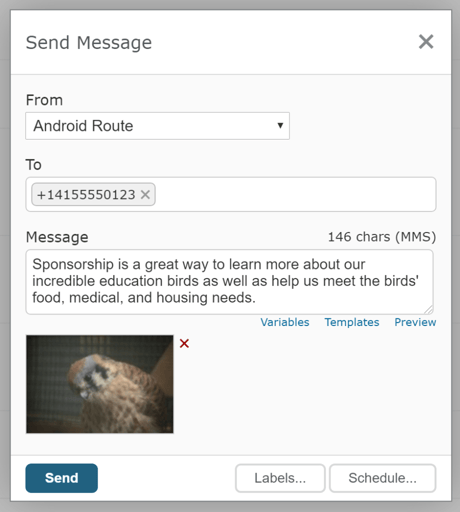The Telerivet Gateway app now supports sending and receiving multimedia messages, including images, video, audio, and PDF files. With the Telerivet Gateway app, you can use an Android phone as an MMS gateway in any country, as long as your mobile network supports MMS.
To start sending and receiving MMS, install or upgrade to the latest version of the Telerivet Gateway app at https://telerivet.com/gateway .
To send a multimedia message from Telerivet, click New Message on the Messages page, then click Media, then upload an image, video, audio, or PDF file, or copy a URL to a file uploaded elsewhere.

To send multimedia messages via Telerivet’s REST API, first upload the multimedia files somewhere with a publicly accessible URL, then specify the files to send via the media_urls parameter. (View API documentation)
If your contacts send photos or other multimedia to your Android phone, you can view or download the files from the Messages page in Telerivet, or retrieve them via Telerivet’s developer API.

Each mobile network has a limit for the maximum size of an MMS message. By default, the Telerivet Gateway app will automatically resize and compress large image files to be 599 kB or smaller, which should be supported by most mobile networks. (The maximum file size can be configured on the Messaging Settings screen in the Telerivet Gateway app.) The Telerivet Gateway app doesn’t automatically resize video, audio, or PDF files, so your messages may fail to send if the attachments are larger than the maximum size supported by your network.
Sending MMS requires Android 5.0 or above. Sending and receiving MMS is only possible if MMS is supported by your mobile network. Depending on your mobile network and plan, there may be additional data charges to send or receive MMS messages.